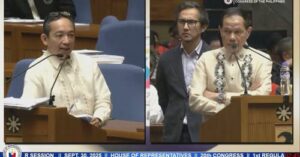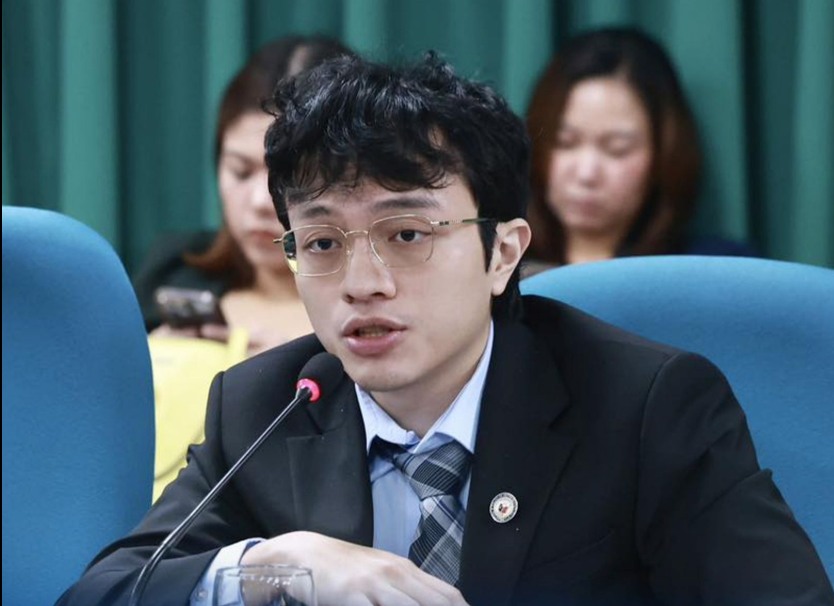By Diego Morra
ACT Teachers Rep. Antonio Tinio has exposed another way of plundering funds after the public became aware of the systematic thievery of as much as P1.9 trillion of the money appropriated for ghost, substandard, and incomplete flood control projects (FCPs).
Tinio disclosed that far from exercising prudence in the disbursement of already scant resources for the infrastructure program, the Marcos Jr. administration actually threw caution to the wind and generously granted the Department of Public Works and Highways (DPWH) ₱61.4 billion from unprogrammed appropriations (UAs) in 2023 for 1,889 projects, and more than doubling the sum to ₱153 billion the following year for 1,811 projects. In all, 3,700 projects worth ₱214.4 billion in two fiscal years were funded by UAs, many of them FCPs, roads and multi-purpose buildings.
If President Ferdinand R. Marcos Jr. were aware of the hemorrhage of public funds during the administration of the unlamented Rodrigo Duterte, the only option left to him was to be meticulous in checking that all projects funded by UAs are aboveboard and could stand scrutiny, from design to the materials used, the quality of work and efficient use of the budget. These matters are crucial since the UAs are actually standby funds and the General Appropriations Act (GAA) has no specific funding for any of them. As usual, the government would use the proceeds of foreign loans to bankroll these projects, subject only to the approval of the Monetary Board (MB) comprised of Marcos Jr. appointees.
Tinio explained that UAs are lump-sum allocations without line items in the GAA, rendering them opaque and not subject to public scrutiny. “Walang readily available na listahan ng mga laman. Hindi po transparent, wala pa tayong full transparency kaugnay kung saan nilaan ang napakalaking mga halaga,” he stressed. Checking on the historical data, something that can be assessed without resorting to blagging, he discovered that under Marcos Jr., the increase in UAs was astronomical, reaching ₱807 billion in 2023, ₱731 billion in 2024, before tapering off to ₱363 billion this year. projected for 2025. “Pambihira po ang naging paglaki ng UAs. Walang kapantay actually kung bumalik pa tayo sa past 10 years or more,” Tinio explained.
Tinio also stressed that all projects covered by UAs have to be approved by the President under the Administrative Code. Citing Section 35, Chapter 5, Book 6 of Executive Order No. 292, it mandated: “Expenditures from lump sum appropriations… shall be made in accordance with a special budget to be approved by the President.” While Rep. Romeo Momo Sr., the sponsor of the DPWH budget, claimed that the approval of the Special Budget Requests (SBRs) rests with the budget secretary, he eventually admitted that the President’s approval of SBRs was required. In one fell swoop, Tinio and the Makabayan Coalition destroyed the Palace claim that Marcos Jr. had nothing to do with FCP project implementation. “Ang sabi po ng Palasyo na wala pong role ang Presidente sa issue ng flood control: ‘Hindi siya involved sa corruption,’” Tinio said. Likewise, as the president’s alter ego, Executive Secretary Lucas Bersamin, who knows a lot about bureaucratic rigmarole, cannot be blind about the disbursements for UAs.
If the Marcos Jr. administration were wise enough, it would exercise strict oversight functions over the 3,700 projects costing ₱214.4 billion inasmuch as the designated project implementor was the notoriously graft-ridden DPWH. Moreover, reports showed that Malacanang pooh-poohed the official statement of former Public Works Secretary, now Senator Mark Villar, that he had completed 11,340 FCPs during his incumbency at the DPWH. This is the same Mark Villar assailed by Las Pinas residents for spending up to ₱ 5 billion in road projects that traverse through Villar properties, thus raising their values. It’s actually like father, like son, former Speaker and Senate President Manny Villar, also tweaked infra projects to be built where their properties are located. This is the same Manny Villar whom former Presidential Commission on Good Government (PCGG) Commissioner Ruben Carranza said was gunning to own a piece of Cavite property that the PCGG had sequestered.
Mark Villar is now under the gun, as the Department of Justice (DOJ) announced, since his cousin apparently cornered ₱ 18.5 billion in DPWH projects during his time at the department. In fact, claimed Justice Secretary Crispin Jesus “Boying” Remulla, all of the Villars will be subjected to investigation. Yet, Remulla should also take a good look at the very terrible development that happened with Mark Villar at DPWH. Ostensibly, the transfer of supervision of local water districts (LWDs) from the Local Waterworks Utilities Administration (LWUA) to the DPWH was a huge favor to the Villars even as it gobsmacked lawyers at the Office of the Government Counsel for government-owned or -controlled corporations (GOCCs) who found no rhyme or reason why the DPWH should dip its finger in LWDs that operate firmly within the ambit of local government units (LGUs.)
Under Mark Villar, Primewater Infrastructure Corp., a company controlled by his brother, snagged 440 joint-venture deals with LWDs, freeing only 108 LWDs from Villar control. Mark Villar claimed that he had nothing to do with the meteoric rise in the number of LWDs controlled by Primewater since he conveniently delegated supervision of LWDs to an underling. Like Pontius Pilate, Mark Villar has a cistern brimming with water with which to wash his hands. He denies any responsibility for practically monopolizing the water systems of millions of people through the expediency of assigning another official to sign documents and pass judgment on the Primewater JVs. It doesn’t wash. Curiously, the Villars are also bidding to control the entire bulk water system of Cavite by way of securing water from 18 rivers in the province.




